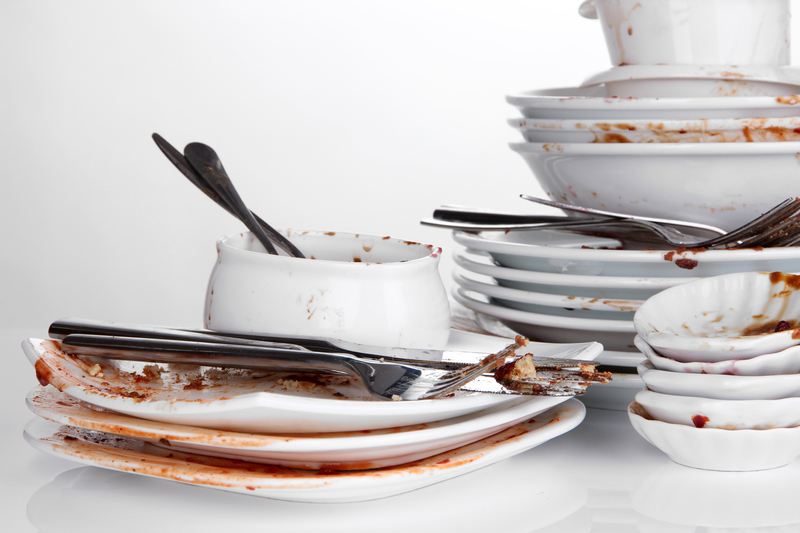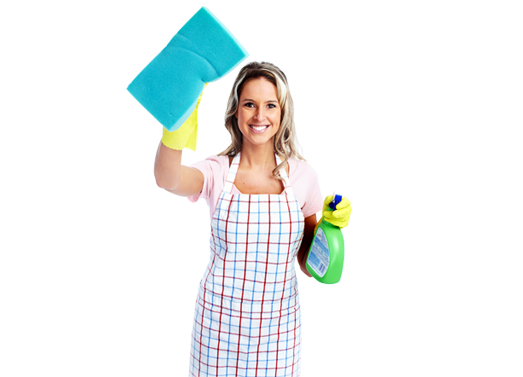Ultimate Curtain Cleaning Methods for Fresh Fabrics
Posted on 28/06/2025
Ultimate Curtain Cleaning Methods for Fresh Fabrics
Keeping your curtains looking immaculate is not only essential for aesthetics but also for maintaining a healthy and pleasant home environment. Dust, allergens, odors, and stains can quickly accumulate on curtains, making regular cleaning a necessity. In this comprehensive guide, we'll uncover the best curtain cleaning methods for fresh fabrics to help you extend the life of your drapes, enhance color vibrancy, and ensure spotless results every time.
Why Is Curtain Cleaning Important?
Your curtains act like filters--trapping dust, pollen, odors, pet dander, and even mites. Over time, this build-up can not only dull the look of your fabrics but also negatively impact indoor air quality. Fresh curtain fabrics don't just look good; they help create a healthier living space.
- Prevents Allergies: Regular cleaning reduces allergens and promotes clearer air.
- Preserves Fabric Quality: Cleaning prevents fiber breakdown, ensuring your drapes last longer.
- Enhances Home Aesthetics: Bright, clean curtains uplift the entire room.
- Removes Odors: Curtains absorb household smells; cleaning keeps fabrics fresh-smelling.

Know Your Curtain Fabric Before Cleaning
Before choosing a curtain cleaning technique, understanding your fabric type is crucial. Not all curtain materials respond well to water or harsh chemicals. Your action plan will differ for velvet, cotton, polyester, silk, linen, or specialty fabrics like blackout or thermal curtains.
- Read Manufacturer Labels: Most curtains come with care instructions--follow them closely to avoid damage.
- Test for Colorfastness: Try a hidden spot with water and mild detergent to check if colors bleed.
- Delicate Fabrics: Silks, sheers, and laces often require gentler methods like hand washing or professional cleaning.
Top Curtain Cleaning Methods for Spotless, Fresh Fabrics
1. Regular Dust Removal
Keeping dust at bay is the first step in curtain maintenance.
- Vacuum Weekly: Use a soft brush attachment to gently vacuum curtains from top to bottom. This prevents dust build-up and reduces the need for deep cleans.
- Shake It Out: Mildly soiled curtains can benefit from a firm shake outdoors--be sure to do this regularly to remove loose particles.
- Lint Roller: For pet hair or visible lint, a lint roller is quick and effective.
2. Steam Cleaning Curtains
Steam provides powerful sanitization without harsh chemicals, making it a favorite for the ultimate curtain cleaning of fresh fabrics.
- Set Up: Leave your curtains hanging. Use a handheld garment steamer or the appropriate vacuum cleaner attachment.
- Technique: Test on a small area first, then move the steamer slowly down each panel, keeping a few inches away from the fabric to avoid oversaturation.
- Best For: Cotton, synthetics, and thick drapes. Avoid on delicate or water-sensitive fabrics.
- Bonus: Steaming also helps remove wrinkles and refreshes the overall look.
3. Machine Washing Curtains
When your care label permits, machine washing is a thorough way to revitalize your curtain fabrics.
- Preparation: Remove curtain hooks, rings, and trims. Shake out excess dirt.
- Washing: Use a gentle cycle with cold water and a mild detergent. Wash sheer or lace curtains inside a mesh bag to prevent tearing.
- Drying: Air-dry is best to prevent shrinkage and fading. Hang curtains back up while slightly damp to avoid wrinkles.
- Variations: Heavier fabrics may require extra rinsing to remove all detergent residue.
4. Hand Washing for Delicate Curtains
Hand washing is ideal for intricate or sensitive materials. It offers gentle, controlled cleansing and is less likely to warp or damage curtain fibers.
- Use Lukewarm Water: Fill a bathtub or sink with lukewarm water and dissolve a small amount of gentle detergent.
- Gentle Agitation: Immerse curtains and lightly agitate with your hands, avoiding any scrubbing or wringing.
- Rinse Thoroughly: Drain and refill tub with fresh water until no suds are left.
- Air Dry: Lay flat on a towel or hang while damp.
- Caution: Avoid hand washing blackout or thermal curtains, as excessive water can damage the lining.
5. Spot Cleaning Stains
Spills and stains don't have to ruin your curtains. Immediate action and the right products help preserve fresh fabric beauty.
- Blot, Don't Rub: Use a clean, dry towel to absorb spills.
- Mild Cleaning Mix: Mix gentle dish soap with lukewarm water. Dab onto stains and gently lift out the mark.
- For Tough Stains: A mix of white vinegar and baking soda can tackle stubborn spots. Always patch-test first!
- Avoid Bleach: This can strip color and weaken fibers of most curtain fabrics.
6. Professional Curtain Cleaning Services
When your drapes are too large, too intricate, or fabricated with specialty materials, it's best to turn to professional curtain cleaners.
- Expertise: Professionals use advanced equipment and cleaning solutions tailored for specific fabric needs.
- Convenience: Many services offer take-down and re-hang options, saving you time and effort.
- Results: Deep cleans and fabric maintenance you may not achieve at home--ideal for heavily soiled or expensive drapes.
Cleaning Tips for Specific Curtain Fabrics
Cotton & Linen Curtains
- Machine washable on gentle cycles; avoid hot water.
- Shake out wrinkles and hang while damp for best results.
- Can be ironed on the reverse side when needed.
Silk Curtains
- Never machine wash--hand washing with a silk detergent or professional dry cleaning is best.
- Avoid sunlight during drying to prevent discoloration.
Velvet & Heavy Drapes
- Vacuum regularly with a soft attachment.
- Steam cleaning revives texture and removes dust.
- For deeper cleans, consult with a pro; at-home washing can crush fibers.
Sheer & Lace Curtains
- Delicate, often best washed by hand or on a very gentle machine cycle in a mesh bag.
- Air dry carefully to avoid stretching or tangling.
Blackout & Thermal Curtains
- Spot clean stains and regular vacuuming is preferable.
- Never soak; water can damage the inner linings.
- Professional curtain cleaning is recommended for best results.
Step-by-Step Guide: How to Clean Your Curtains at Home
- Read Care Labels: Always check manufacturer recommendations before you start.
- Remove Hardware: Unhook all curtain ties, rings, and rods for easier access and thorough cleaning.
- Pre-Clean: Shake out curtains and vacuum to eliminate loose dust and dirt.
- Choose Cleaning Method: Decide between vacuuming, steaming, hand-washing, or machine washing based on fabric type.
- Wash or Steam: Follow the appropriate technique outlined above.
- Dry Properly: Hang curtains to air-dry. Avoid tumble dryers, which can shrink or distort fabrics.
- Rehang Promptly: While slightly damp, rehang your curtains to let gravity reduce creases for a smooth finish.
Additional Curtain Care Tips for Longevity
- Avoid Direct Sunlight: UV rays can fade colors. Use blinds or sheers underneath heavy drapes for added protection.
- Keep Windows Clean: Dirty windows transfer grime onto your curtains.
- Deodorize Regularly: Lightly spritz with a fabric freshener or use essential oil diffusers nearby for fresh fragrance.
- Monthly Refresh: Hang curtains outside (weather permitting) for an hour to air them out and remove odors.
- Prevent Mold: Ensure good room ventilation, especially in humid climates.
Common Curtain Cleaning Mistakes to Avoid
- Ignoring Care Tags: Always check labels to prevent damage or shrinkage.
- Over-Wetting: Too much water, especially on blackout or lined drapes, can ruin fabrics.
- Using Harsh Chemicals: Stick to gentle detergents designed for curtains.
- Wringing or Scrubbing: This can deform fibers, especially in delicates.
- Tumble Drying: High heat often causes shrinkage, fading, or wrinkling.

FAQs: Ultimate Curtain Cleaning Methods for Fresh Fabrics
How often should I clean my curtains?
Light, regular cleaning (vacuum and shaking) should be done monthly, while deep cleaning is recommended every 6-12 months depending on your environment and fabric type.
Can I machine wash all curtain fabrics?
No. Delicate, silk, velvet, and blackout curtains typically require hand washing or professional care. Always check care labels first.
Is steam cleaning safe for all fabrics?
Steam cleaning is safe for many synthetic, cotton, and blended fabrics. Avoid using on silk, velvet, or those labeled "dry clean only."
How can I remove wrinkles after cleaning?
Rehang curtains while damp to let gravity do the work. For stubborn wrinkles, use a steamer or iron on the reverse side at the lowest temperature suitable for the fabric.
When should I contact a professional?
If your curtains are too large, valuable, or made from specialty fabrics--or if you're unsure about the right cleaning approach--it's best to call a professional curtain cleaner.
Conclusion: Keep Your Curtains Fresh and Fabulous
Curtains are more than just decorative--they're functional, acting as a barrier against dust and light, and helping insulate your home. By embracing these ultimate curtain cleaning methods for fresh fabrics, you not only enhance your living space but also extend the life and vibrancy of your drapes.
With the right know-how, regular maintenance, and a careful approach to washing and spot-cleaning, your curtains will stay spotless, fresh, and beautiful year-round. So, follow these expert curtain cleaning tips to transform tired drapes and keep your home looking and feeling its very best!





